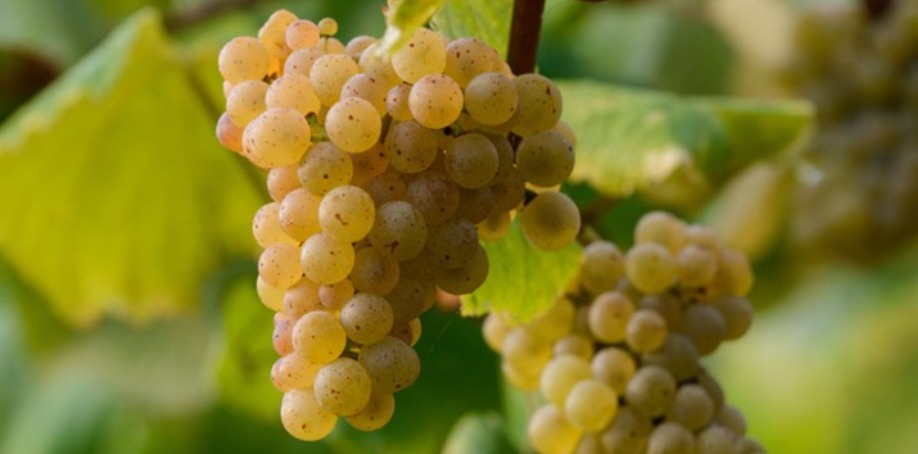Everything You Need To Know About Albariño

India's First & Only Master of Wine.
Albariño has become immensely popular in the past decade or so. This interesting grape variety is from Spain and the grapes are tiny with thick skin. Albariño gets a raw almond or lemon peel-like bitterness from the skin’s phenol content. Some of the oldest living vines in the world, dating back as far as 300 years, belong to this grape variety.
Characteristics
A typical Albariño is dry with high acidity. It is medium to full-bodied, with flavours of lemon and stone fruit such as peach. Wine made from Albariño is usually consumed young and is unoaked. It is not meant for long-term ageing. Sometimes, winemakers use a small amount of lees to add a bit more body, complexity and savoury notes to the wine.
Winemaking
Rias Baixas DO, Spain: 90 percent of the vineyards here grow Albariño and thus it is considered a classic from this region. Rias Baixas DO (Denominación de Origen) is located close to the Atlantic Ocean making the region cooler and wetter than the rest of Spain. This makes it suitable for producing cool and refreshing white wines. The appellation is blessed with granite soils that infuse an intense minerality in the wines.
Some of the finest examples of Albariño wines from Rías Baixas are known for their intense aromas and a floral aftertaste that stays with you for a long time. This region is controlled by Consejo Regulador, a wine commission responsible to ensure that all wineries and vineyards adhere to growing permitted grape varieties, methods of pruning and training, and vine density. The commission also keeps an eye on how much fruit a vineyard yields and tastes wine samples for quality check. A wine can be labelled as Rias Baixas only when it passes the quality check.
Vinho Verde, Portugal: In Portugal, this grape variety is known as Alvarinho. It is one of the grapes that go in Vinho Verde, a regional white wine that is crisp and aromatic. Other recommended grape varieties that go into this wine are Trajadura,Loureiro, Batoca, Arinto, Avesso, and Azal-Branco. However, DOC also permits the use of other varieties like Cainho, Diagalves, Cascal, Esgana-Cão, Semilão, TaliaFernão-Pires, Folgasão, Godelho, São-Mamede, Lameiro, Malvasia-Fina and Malvasia-Rei.
One region worth mentioning here Moncao. The villages near this Spanish town produce some of the finest expressions of Vinho Verde. The grapes here have a lower yield which makes a fuller style of wine. Vinho Verde production laws mandate that wines cannot have more than 11.5 percent alcohol-by-volume, however, Mancao wines are an exception to this rule with an ABV that hovers around 13 percent.
This expression of wine is much lighter, crisper and drier, and often has some spritz which adds a dimension of youthfulness and freshness
Fun Wine Fact: Semillon, often overshadowed by its more famous counterparts, is a white grape with a hidden talent. While it may not hog the spotlight, it plays a crucial role in creating some of the world's finest dessert wines, lending its unique character to Sauternes and other lusciously sweet concoctions.
New World
The Spanish grape variety has found a second home in wine regions of California that are close to the sea and enjoy a cooler climate. These include the sea-facing side of the Coastal Mountains in San Luis Obispo County, Napa County, Carneros, and Santa Ynez Valley.
The grape variety can also be found in other wine producing countries of the New World like Brazil, Argentina, New Zealand and Uruguay.
At the turn of the millennium, you’d have found one more name on this list- Australia. However, DNA studies eventually found that the “Albariño” in Australia was, in fact, Savagnin due to which the winemakers had to change the grape variety mentioned on their wine labels.

Serving
Serving Temperature – 7 to 10 degrees Celsius
Glassware - Standard white wine glass
Food Pairing
Albariño is quite a fleshy wine and it can work wonderfully well with seafood. Try it with grilled (or fried) fish tacos, ceviche, seafood risotto, oysters, mussels, and clams.
For cheese pairing, you can go with soft cheeses such as burrata or ricotta, or semi-hard cheeses such as gruyere, gouda or edam.
The wine also works well with a number of vegetarian dishes due to its grassy notes. Dips like salsa verde, which showcase green herbs in all their glory, make for a good pairing with Albariño. You can also try it with Spanish tapas such as grilled padrón (or shishito) peppers, grilled vegetable dishes, caprese, or even Caesar salad.
Are you interested in learning more about different wine grape varieties? Start your wine journey today with the Sonal Holland Wine Academy. Access world-class knowledge straight from India’s most qualified wine expert to gain confidence and an unbeatable edge in your career.
Click here: To Know More About Our Courses.
Originally published 14th September, 2023
EMBARK ON YOUR WINE JOURNEY WITH A DASH OF EXCITEMENT AND A GLASS OF DETERMINATION!
Ready to swirl, sip, and savor? Join the grape adventure at Sonal Holland Wine Academy.
Don't wait – it's time to uncork your passion!